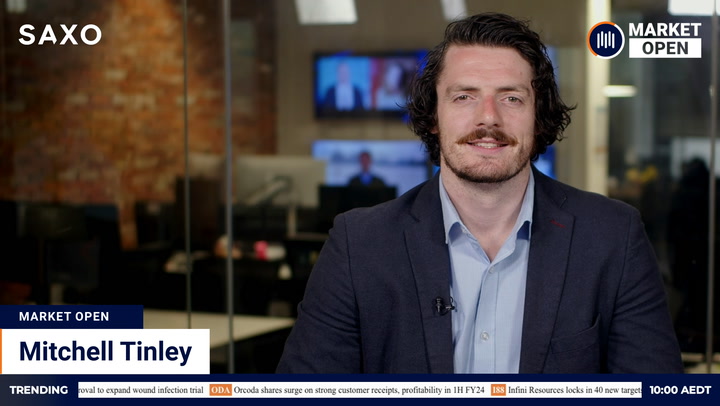Wall Street’s worst session since August points to a grim start to Australian trade ahead of the re-opening of Chinese markets.
US stocks cratered on Friday, the Dow losing more than 600 points amid growing fears of the impact of the coronavirus on the global economy
The result was a 119-point tumble on ASX SPI200 index futures to 6835, a decline of 1.7 per cent. If trade in company shares reflects those figures, the ASX 200 will open at its weakest level since mid-January.
Chinese markets are set to trade today for the first time since closing on January 23 for Lunar New Year holidays. Chinese regulators were reported to be imposing a ban on short selling in a bid to limit losses. Some of Friday’s selling in the US and Europe was believed to be triggered by uncertainty over the likely scale of the dive today as trapped investors look to exit.
“The Chinese market is going to have a whole week’s worth of reaction all at once,” Randy Frederick, Vice-president at Charles Schwab, told Reuters. “That’s a pretty ominous thought. I think people are selling ahead of that.”
The Dow slumped 603 points or 2.09 per cent, erasing its gains for the year as traders dumped global bellwethers Caterpillar and Apple. The broader S&P 500 fared slightly better, losing 58 points or 1.77 per cent. The Nasdaq shed 148 points or 1.59 per cent.
The falls capped Wall Street’s worst week in six months. The S&P 500 has fallen more than 3 per cent since peaking on January 16.
Friday brought another round of negative developments tied to the virus outbreak that originated in China’s Hubei province. US authorities declared a public health emergency. United Airlines, Delta and American suspended flights to and from China. Goldman Sachs predicted the epidemic will cut around four-tenths of a percentage point off US growth this quarter. The death toll from the virus was yesterday raised to 304, with more than 14,500 confirmed cases around the world.
Apple plunged 4.43 per cent to its heaviest loss in more than five months during a general retreat from stocks exposed to Chinese demand. Delta gave up 2.38 per cent, American Airlines 3.17 per cent and United 3.79 per cent. Among companies reporting, Caterpillar shed 2.97 per cent, Chevron 3.82 per cent and Exxon Mobil 4.12 per cent. Amazon jumped 7.38 per cent.
The mood towards Australia’s biggest miners deteriorated as the trading cycle swung from Australia through Europe into the US. While BHP’s Australian listing gained 1.03 per cent on Friday, its UK-listed stock lost 1.86 stock per cent and its US-listed stock 3.53 per cent. Rio Tinto shed 1.98 per cent in the UK and 3.24 per cent in the US. The falls follow a 45 cents or 0.5 per cent decline in the spot price for iron ore landed in China to $US82.55 a dry ton.
The ASX weathered last week’s turmoil better than most global peers, losing just 1 per cent over the holiday-shortened week. The ASX 200 bounced nine points or 0.1 per cent on Friday to seal a five per cent gain for the month, the index’s best start to a year since 2012.
The demand implications of suspended air travel and lower global growth have hit oil hard. International benchmark Brent crude lost 12 per cent during January. The US benchmark, West Texas Intermediate, shed 15.6 per cent during its worst month since last May. On Friday, Brent crude settled 72 cents or 1.2 per cent lower at $US56.62 a barrel.
Industrial metals have also taken a pounding, leaving copper in London near a five-month low. The Shanghai Futures Exchange is due to re-open today amid speculation that copper will hit its daily down limit of 7 per cent. Benchmark copper on the London Metal Exchange eased 0.3 per cent to $5,551 a tonne on Friday following its worst month since 2015. The bellwether metal was down 12 per cent from its mid-January peak. Nickel rose 1.8 per cent, lead 3.3 per cent, zinc 0.3 per cent and tin 2.4 per cent. Aluminium eased 0.7 per cent.
Gold eased a fraction from a six-year high, but was one of the few assets to come through last week with a gain. Gold for April delivery settled $1.30 or 0.1 per cent lower for the day at $US1,587.90 an ounce, but ahead 0.6 per cent for the week and 3.8 per cent for the month.
The dollar opened this morning broadly steady at 66.93 US cents.
All eyes will be on China today, but the day ahead also brings domestic job ads and building approvals at 11.30 am EST. China releases manufacturing figures at 12.45 pm. Europe and the US also release manufacturing reports tonight. The quarterly earnings season continues in the US with reports from Google-parent company Alphabet,







